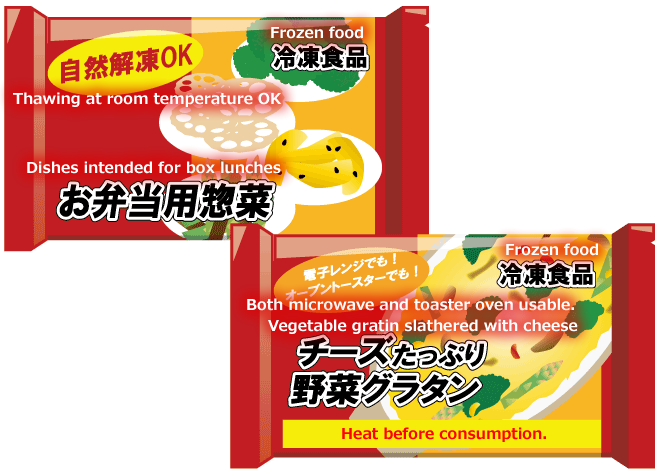Tokyo Food Safety Information Center » Tokyo Metropolitan Government food safety FAQ » Is it safe to put frozen dishes in a lunchbox for later consumption?
Is it safe to put frozen dishes in a lunchbox for later consumption?

Is it safe to put frozen dishes in a lunchbox for later consumption?

- Check whether the instructions of the frozen dish intended for use in a box lunch include a description such as “thawing at room temperature allowed”. If not, do not thaw it at room temperature.
- In addition, even in case the box lunch contains frozen dishes that may be thawed at room temperature, cool the box lunch as far as possible when carried and stored, and consume the lunch as soon as possible.


[Thawing dishes for a box lunch at room temperature has hygienic problems.]
- The box lunch may be left in conditions where low-temperature control is insufficient for a long time because it is carried and stored. In order to thaw dishes for box lunch at room temperature without heating before consumption, therefore, severe hygiene management is required at the time of production.
- With regard to the frozen foods used as dishes for box lunches by common households that can be thawed at room temperature, the Japan Frozen Food Association has established regulations including those applied to hygiene management, so that people are not anxious about quality and hygiene.
[Carefully read the instructions on the labels of frozen foods used as dishes for box lunch.]
- When using frozen food used as a dish for box lunch, carefully read the indication of the product (including the cooking method on the rear side of package, etc., or the collective indication area).
- Do not thaw frozen food at room temperature in a lunch box if:
1) Necessity of heating prior to consumption is indicated, such as “Necessity of heating: Heating required”; or
2) There is no indication of “Thawing at room temperature allowed” even in case where the descriptions say that heating prior to consumption is not required, such as “Necessity of heating: Thaw and consume as it is”.(This product may not be intended to be thawed at room temperature by putting in box lunch.)
[<Reference> Frozen foods used as dishes for box lunches investigated by Tokyo Metropolitan Government]
The frozen foods used as dishes for box lunches include, not only those that may be thawed at room temperature, but also those that need heating before consumption, and their packages look very similar.
Therefore, we at the Tokyo Metropolitan Government investigated the frozen foods used as dishes for box lunches:
Investigation results:
- We asked citizens of Tokyo how easy to understand the indication used to determine whether the frozen food product is “thawing at room temperature allowed” or not. As a result, 42% answered “easy to understand” and 45%, “difficult to understand”, indicating that nearly half of the citizens answered “difficult to understand”.
- In some stores including supermarkets, these two types of products were intermixed for display.
- We performed an experiment of storage of frozen food products at temperatures appropriate to proliferation of bacteria for a long time in order to examine the potential microbiological risks at the time of consumption. The result indicated that the frozen food products that needed heating (frozen food products to be heated before ingestion) tended to indicate higher values of detected bacteria after the storage experiment than those products indicating “Thawing at room temperature allowed”. This clarified the importance of usage as indicated.
* In addition to the frozen foods used as dishes for box lunches, some frozen vegetable products indicate “Thawing at room temperature allowed”. However, no standard, etc., for indication of “thawing at room temperature allowed” has been established pursuant to laws and regulations, nor by any industry group (as of February 2018).